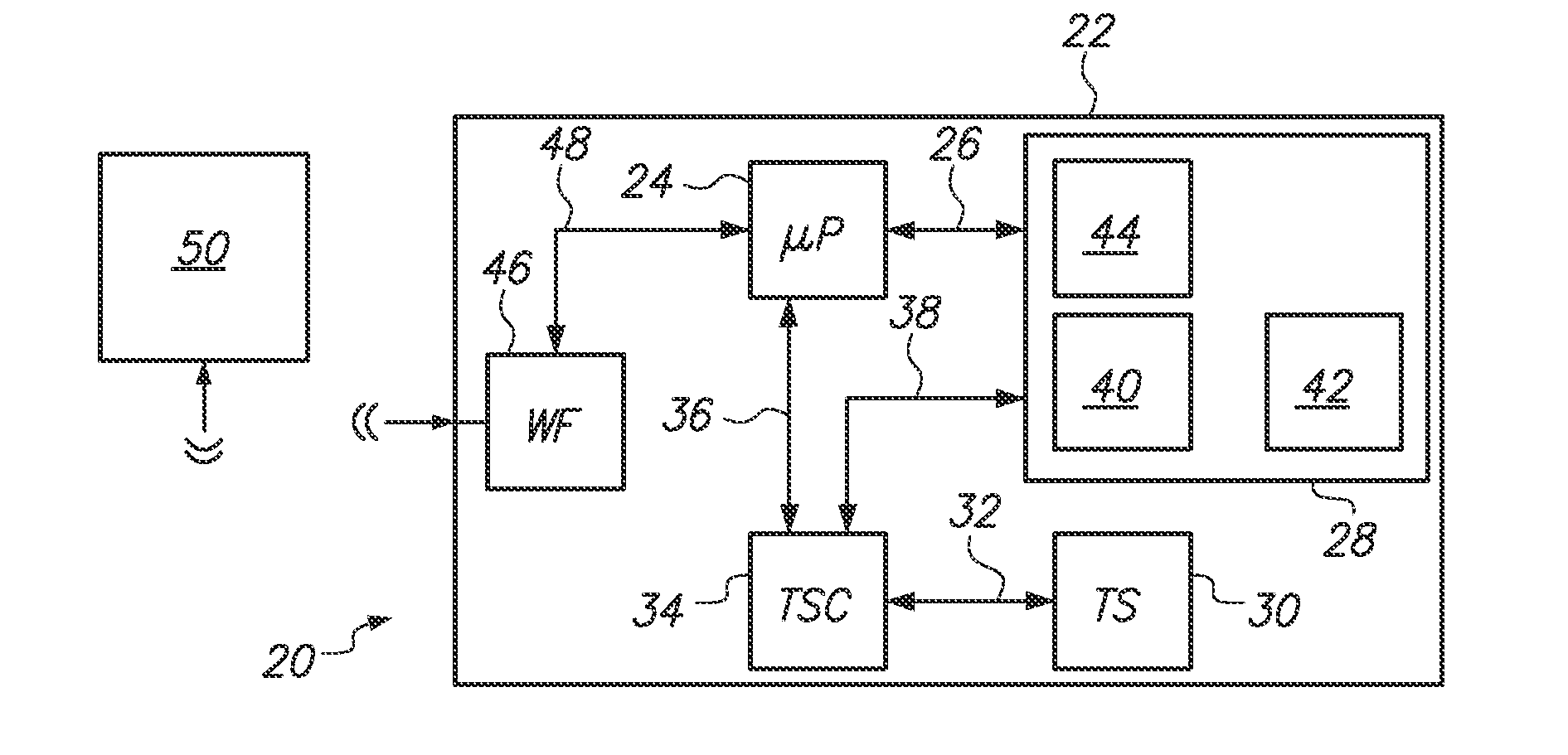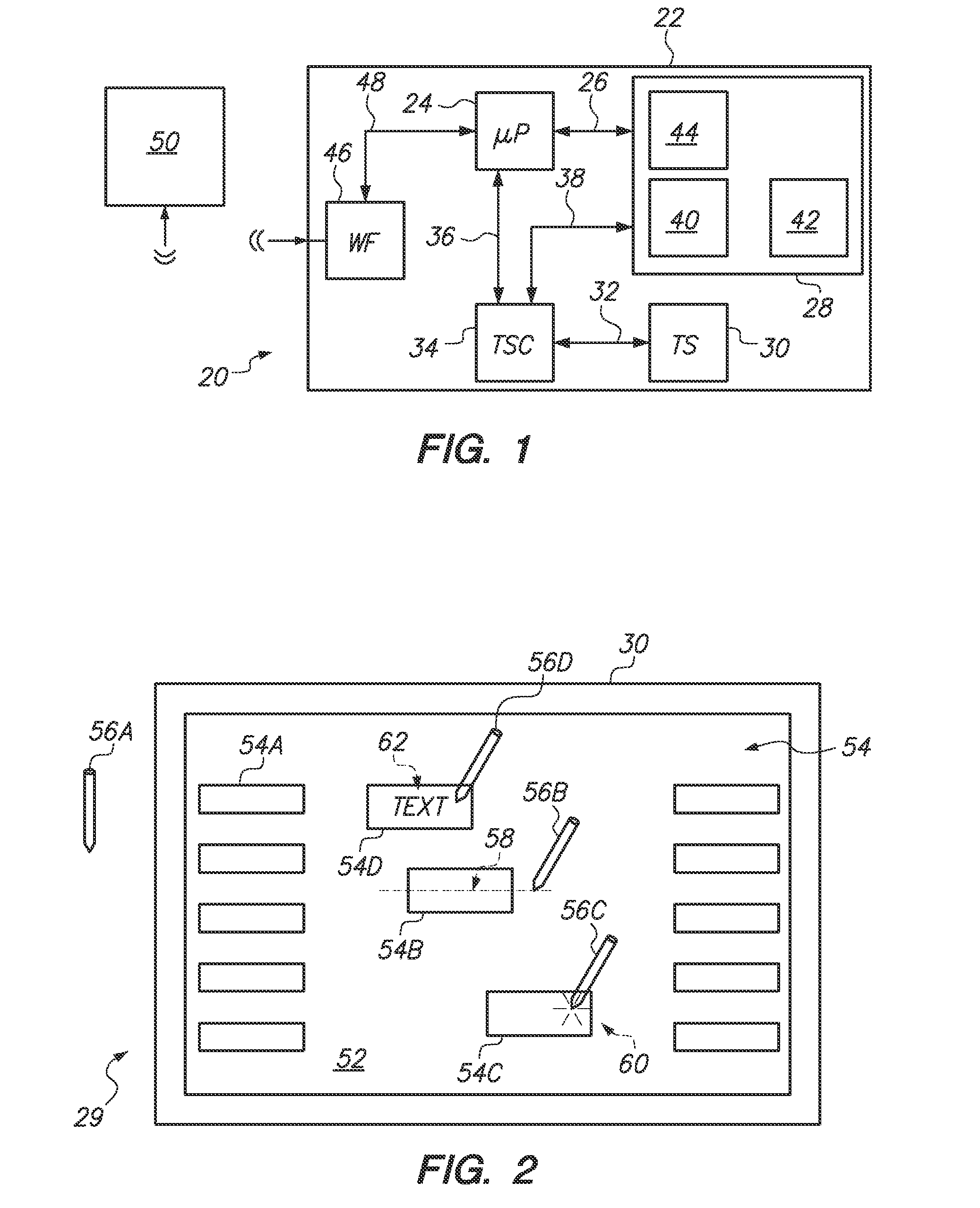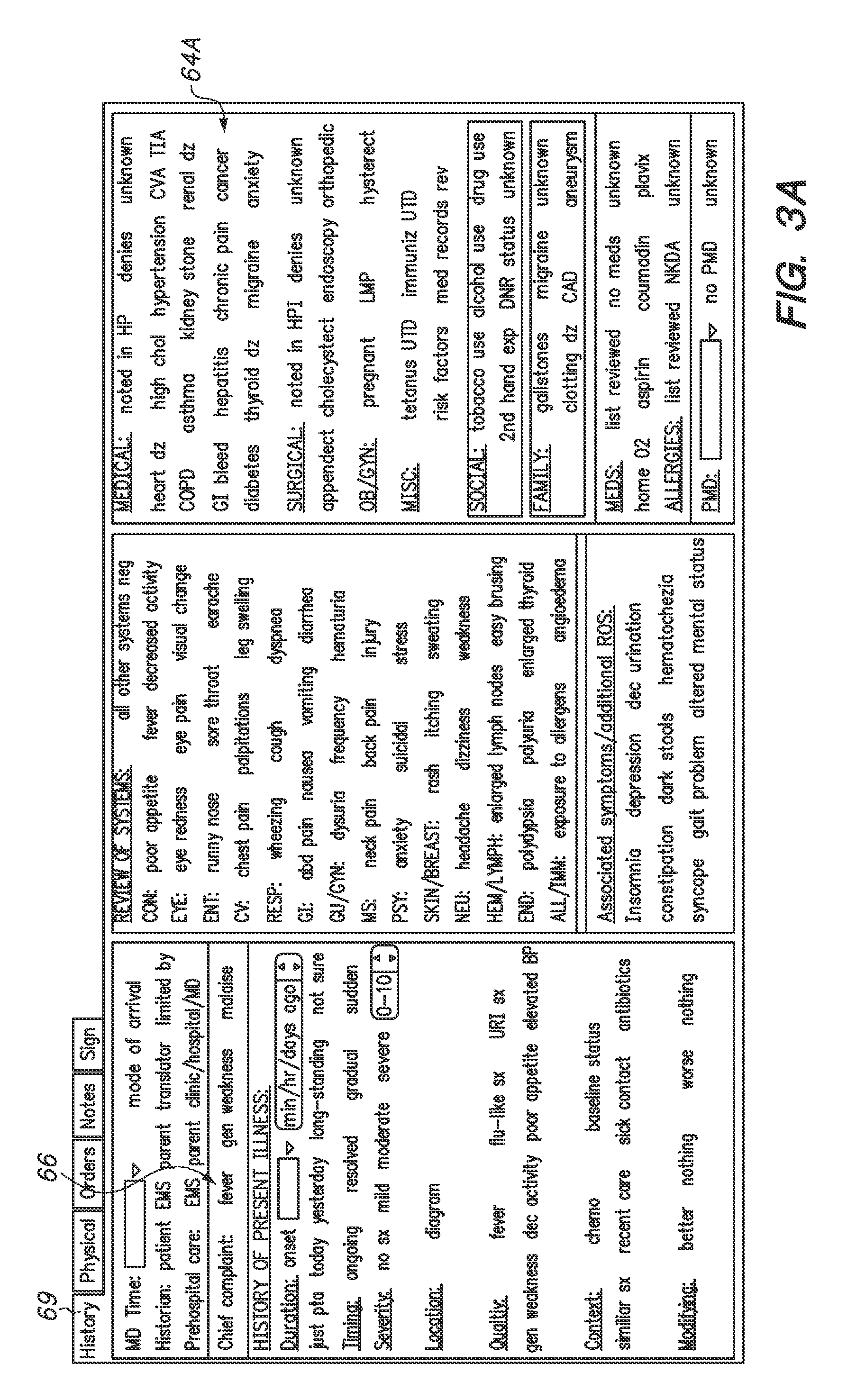System for real time recording and reporting of emergency medical assessment data
a real-time recording and emergency medical assessment technology, applied in the field of electronic record management systems, can solve the problems of cumbersome and difficult use of the physician documentation part of the existing emr system, lack of many practical features required for utility in the hospital emergency room,
- Summary
- Abstract
- Description
- Claims
- Application Information
AI Technical Summary
Benefits of technology
Problems solved by technology
Method used
Image
Examples
exemplary embodiment 94
[0044]FIG. 7 is a schematic diagram illustrating an exemplary embodiment 94 of the EMD capturing method of this invention. In the first step 96, one or more of a plurality of GUI menus is produced for display to the operator on touch-screen 30 (FIGS. 1-2). In the next step 98, commands and data are captured and transferred to local processor 24 responsive to operator gestures detected by touch-screen 30 (FIGS. 1-2). In the following step 100, a menu item display is modified by system 20 to communicate to the operator any additional commands or data required (in view of the captured EMD) by a predetermined EMD requirement defined in the Emergency Medicine EMR specification (e.g., the Medicare coding requirements referenced herein above). This menu item display modification may be embodied as, for example, a new submenu display, a color change in a menu item display, an audio signal, locking or unlocking of one or more menu items, or any other useful menu modification suitable for the...
exemplary embodiment 106
[0045]FIG. 8 is a schematic diagram illustrating an exemplary embodiment 106 of the gesturing command and data input method of this invention. Method 106 is a loop that starts at the step 108 to test for a detection of a tap gesture linked to a menu item displayed on touchscreen 30 (FIGS. 1-2). If step 108 succeeds, then the step 110 sends a selection command to system 20 for the linked menu item and the loop returns to step 108 as shown. If step 108 fails, then the loop proceeds to the next step 112, which tests for a detection of a slash stroke gesture linked to a menu item displayed on touch-screen 30 (FIGS. 1-2). If step 112 succeeds, then the step 114 sends a deselection command to system 20 for the linked menu item and the loop returns to step 108 as shown. If step 112 fails, then the loop proceeds to the next step 116, which tests for a detection of a hand-written text gestures linked to a menu item displayed on touch-screen 30 (FIGS. 1-2). If step 116 succeeds, then the step...
PUM
 Login to View More
Login to View More Abstract
Description
Claims
Application Information
 Login to View More
Login to View More - R&D
- Intellectual Property
- Life Sciences
- Materials
- Tech Scout
- Unparalleled Data Quality
- Higher Quality Content
- 60% Fewer Hallucinations
Browse by: Latest US Patents, China's latest patents, Technical Efficacy Thesaurus, Application Domain, Technology Topic, Popular Technical Reports.
© 2025 PatSnap. All rights reserved.Legal|Privacy policy|Modern Slavery Act Transparency Statement|Sitemap|About US| Contact US: help@patsnap.com



